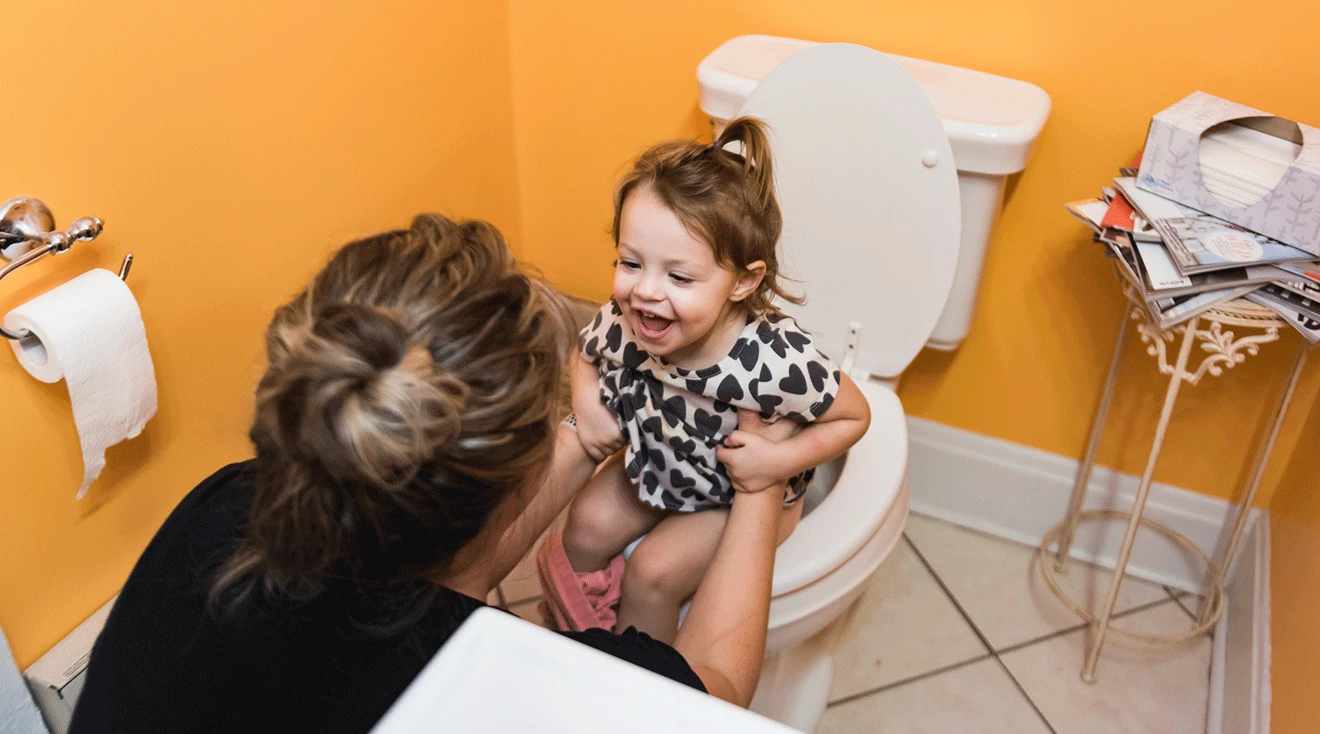“My neighbor’s child was daytime potty-trained at just two years old, but my baby still can’t do without diapers,” said Mengmeng’s mother, her voice filled with anxiety.
Toilet training is a significant developmental milestone. Many parents, like Mengmeng’s mom, feel pressured when they see other children learning this skill early.
In reality, toilet training is a natural process that requires waiting until a child is physically, cognitively, and emotionally ready. Research indicates that the key window of readiness for most children occurs between 18 and 24 months.
01 Spotting the Signs of Readiness
Success in toilet training is determined not by age, but by a child’s developmental stage. Between the ages of one-and-a-half and three, children gradually acquire the physical, mental, and cognitive abilities needed to learn this new skill.
Key signs of readiness include: staying dry for longer periods, showing interest in the toilet, understanding simple instructions, and imitating adults’ behaviors.
Emotionally, they begin to seek parental praise and demonstrate a growing desire for independence. Physically, they can walk freely, sit unaided, and are gaining some control over their bladder and bowel muscles.
It’s crucial to start training during a stable period in the child’s life, avoiding times of illness, fatigue, or major changes like moving house or a change in caregivers.
02 Choosing the Right Equipment
Selecting the right tools is key to success. Provide a dedicated child’s potty, placed in a visible and convenient location.
The potty should be the right height, ideally allowing the child’s knees to be slightly higher than their hips with feet flat on the floor, making it easier to push. Models with fun designs or music can add encouragement.
Practicing with a bare bottom in the summer can help a child quickly sense the urge to go. Using training pants, which are thinner and allow the child to feel wetness, can also build awareness.
03 Following a Step-by-Step Process
Training should be gradual. Initially, let your child sit on the potty clothed for 5 minutes, twice a day for a week, to get them accustomed to it. Never force them.
Focus on bowel training first, then urine; master daytime control before tackling nighttime dryness. Choose a regular time they usually have a bowel movement and have them sit on the potty without a diaper. Don’t rush or expect immediate results.
Establishing fixed potty times is also helpful. Take them at routine moments: after waking up, before meals, before and after naps, before bath time, and before bed to help build a conditioned reflex.
Encourage your child by letting them observe parents or other children, explaining that this is where we go to the toilet. Demonstration and simple explanations are very effective.
04 Using Positive Reinforcement
Positive motivation is essential. When your child succeeds, offer immediate praise and rewards to make them feel proud and accomplished.
Rewards should primarily be verbal praise, hugs, stickers, or applause, avoiding excessive material rewards. Use simple, reinforcing phrases like, “You did a great job using your potty!”
When accidents happen, don’t criticize or punish. Stay calm, help them get cleaned up, and offer encouragement. Say, “It’s okay, we’ll try again next time.”
05 Handling Accidents and Setbacks
Toilet training is a process with inevitable accidents and setbacks. Parents need to be patient and persistent, without expecting instant success.
Progress often includes success, failure, and many steps back. Allow for mistakes and be ready to adapt and restart. Caregivers must have ample confidence and patience to help their child master this skill.
If your child shows resistance or has significant difficulty, don’t force them. Try pausing for a while before starting again. Every child develops at their own pace.
06 Navigating Nighttime Training
Nighttime training typically takes longer. Successful daytime control often precedes nighttime dryness by several months.
Have your child use the potty right before bedtime to reduce the chance of bed-wetting. Establishing a consistent pre-sleep routine is key.
If an accident occurs at night, reassure them it’s okay and involve them in simple tasks like helping change the sheets. Celebrate dry nights with praise the next morning.
07 Avoiding Common Mistakes
The most common mistake is starting too early. Pottying newborns (a practice known as “Elimination Communication”) is not recommended due to potential health risks.
Avoid forcing your child or rushing the process. Training should be a positive, natural, and voluntary process. Give your child plenty of time and opportunity to practice and try.
Be careful not to punish them for mistakes. Forcing a child to sit or “hold it” is not only often ineffective but can also interfere with the natural development of the nerve pathways between the spinal cord and brain that control elimination.
When guiding your child through toilet training, patience and consistency are more important than any technique. Another child might shed diapers early, but every child has their own developmental rhythm.
Accidents and regressions are normal. Parents need to maintain confidence and patience, helping their child master this skill while encouraging them and building their self-esteem.
Some children may still occasionally wet the bed past age 5. If training hasn’t been successful after a year of consistent effort, or if bed-wetting persists beyond age 5, consulting a pediatrician is a wise step.
Ultimately, toilet training is more than just learning a physical skill; it’s a small but significant step toward a child’s growing independence.
